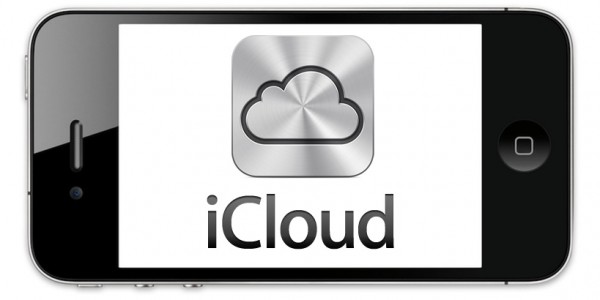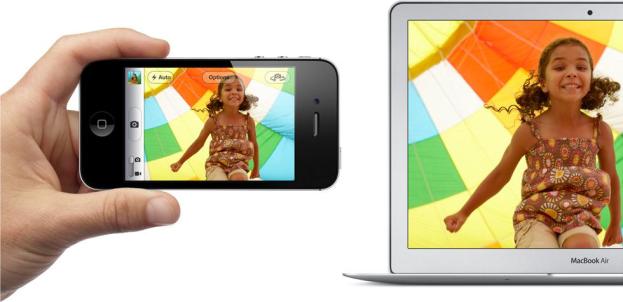
Last year, Apple bet big with iCloud, looking to dislodge the personal computer as the center of users’ digital universes and transfer all that to the cloud. Music, media, contacts, calendars, photos, and more would all be available seamlessly across all devices, whether they be smartphones, tablets, computers, or even televisions: no muss, no fuss. “It just works,” in the words of late Apple CEO Steve Jobs.
So it comes as no surprise that reports are already emerging Apple is planning an update to iCloud, perhaps to be announced at this year’s WWDC conference and to coincide with the release of iOS 6. But so far, analysis of updates to iCloud focus on how one possible feature (photo sharing) seems unlikely to compete with socially-enabled services already out there, particularly the high-priced Facebook acquiree Instagram.
But is does Apple want to compete with social media? If history is any indicator, the answer is no.
What iCloud does

The basic idea behind iCloud is to shift users away from the iPod era of using a PC (or a Mac) as the center of their digital world — sort of the “master copy” of all email, documents, messages, photos, media, and more. Instead, the PC is replaced with Internet-based services and storage — the cloud— as the center: PCs become just another device connecting to the cloud.
So, if you buy a song from iTunes, it’s available on all your iCloud-enabled devices near-instantly. Same with TV shows, movies, and books — and don’t forget an Apple TV can tap into iCloud too. Download an app for your iPad? Boom: It’s available for your iPhone. Have documents, notes, files, settings, and more on your device? They’re automatically backed up to iCloud (up to 5GB for free) and can be retrieved from any authorized device any time you need them. Take a photo on your iPhone? It’s available near-instantly on your iPad, Mac, or even Windows PC — assuming they have Internet access, anyway. Appointments, email, contacts? Same thing, as long as you’re using iCloud-enabled apps. Apple’s key apps support iCloud, and iCloud APIs are available to developers who want to roll in support. And it’s all managed transparently with no user interaction.
The iCloud idea is not new — Google, Microsoft, and others have been playing in the same space for years — but Apple’s notion is very ambitious. iCloud isn’t just an add-on that mirrors files and tacks on a bare-bones email system; it’s a deeply integrated set of services with Apple’s Mac OS X operating system, iOS operating system, and Apple’s broader content ecosystem (including music, books, TV, movies, and apps).
Apple sees the shift to iCloud as fundamental to all its platforms. One reason, of course, is that mobile Internet is now part of many people’s lives, and keeping important data up-to-date between devices is a major issue for many of those folks. Another factor is that Apple has millions of customers that don’t use a PC (or a Mac!) as a hub for their iOS devices. Plenty of people who own an iPhone or an iPad or iPod touch never connect it to a computer running iTunes. With iCloud, Apple can still provide key services to those users. Instead of being device orphans, they’re full members of the Apple universe.
What iCloud might do next

That Apple got iCloud up and running — plus the paid service iTunes Match — is pretty astonishing. Getting the basics right with iCloud was particularly important after the very bumpy launch of Apple’s MobileMe service back in 2008 — the company didn’t need a second major stumble with online services.
That said, iCloud is patently a work in progress, and Apple has had a fairly rough transition with iCloud. Several issues have surrounded getting current customers into iCloud. Many users were disgruntled they couldn’t merge existing Apple IDs for use with iCloud, and others were miffed over cancellation of services like like iWeb and iDisk. And some of iCloud’s initial features were appallingly limited. Take Photo Stream, which offers up to 1,000 photos a user has taken over the last 30 days; when Apple first rolled it out, users could not delete or edit images from Photo Stream. That accidental photo your iPhone took of you picking your nose? Yes, that lovely image automatically synced to all your devices every time you opened Photo Stream for a month. It was an ugly time. But that’s mostly been outweighed by new customers coming to Apple: For folks with little or no legacy, iCloud almost always works as advertised. And over 125 million users are on board.
Apple’s next step will be to incrementally evolve iCloud. The Wall Street Journal (subscription required) claims iCloud will add a video syncing service — presumably working much like Photo Stream does now — along with the capability to organize uploaded photos into albums. The article also claims Apple will add a Web-based interface for creating notes and reminders that can be synced to all their devices, augmenting iCloud’s existing Web-based calendar and email services. There has also been some industry speculation Apple will add file access to iCloud documents within Mac OS X (perhaps as part of Mac OS X 10.8 Mountain Lion), making it a bit of a replacement for Apple’s previous iDisk offering and perhaps addressing some needs currently met by services like Dropbox. Some other speculation has focused on a versioning system in iCloud, similar to what Apple introduced in Mac OS X 10.7 Lion that enables users to roll back to previously-saved editions of a file.
Most commentary at the moment has centered on one possible iCloud enhancement: enabling iCloud users to share photos with other iCloud users, who would also be able to comment. At a glance, this seems to bring Apple into direct competition with services like Flickr and Instagram (and hence Facebook) — after all, that’s the basics of a social-enabled online photo album. The caveat, of course, is that the photos may not be available to the whole world — just to iCloud users. For folks who want a full-fledged Web-wide photo sharing service, this is a non-starter: What good is photo sharing if images can’t be shared with the whole world? Or at least selected people, regardless of whether they own an Apple device?
Apple and protecting its customers
Apple has not been ignoring social media: iOS 5 features direct support for Twitter, and Mac OS X 10.8 Mountain Lion will integrate direct support for both Twitter and Chinese micro-blogging services (weibos). And iPhoto for Mac OS X and the iPad enables users to share images directly to Facebook.

That iPhoto-based image sharing currently marks Apple’s only direct Facebook integration. However, there was another attempt. Back in 2010, Apple introduced Ping, a music-centered social service that’s still part of iTunes. (Don’t worry: most other people aren’t aware of it either.) When Steve Jobs announced Ping, it featured Facebook integration. When users commented on music, recommended something, or made a purchase, that information could be reflected on Facebook. However, when Ping went live, Facebook integration had been removed, with Steve Jobs later saying Facebook had demanded “onerous” terms for Apple to provide the integration.
Some speculated that Facebook set a high price — companies putting significant loads on Facebook’s API have to work out a deal with the company — but Apple had no shortage of cash. Other speculation centered on Apple refusing to disclose customer data to Facebook. After all, Facebook is built on the premise that it collects user information which it then shares with advertisers (and the rest of the world).
There are other examples of Apple’s stance toward customer data. Apple refused publishers’ demands for customer information associated with in-app subscriptions. Customers can opt in to passing along customer data to publishers if they like, but the default is that Apple keeps customer information in confidence. Similarly, Apple’s stance on customer privacy also appears in its default setting to disallow third-party cookies in the mobile version of Safari. That might have been a competitive jab at Google, but it was also a move in favor of retaining user privacy by default. The terms of Apple’s arrangement with Twitter have never been disclosed, but Apple’s stance on privacy seems reasonably consistent: Apple users can opt in to any data sharing they like with third parties, but by default Apple avoids disclosing information. If Apple were to offer direct support for a social photo service, it would have to meet those criteria.

About Apple offering its own public photo sharing service? Back to Ping. There was a fair brouhaha when Ping launched without promised Facebook integration, but something else happened too: an immediate flood of spam and fake accounts. Ping garnered almost a million users within 48 hours of launch, but a frightening number were fraudsters who began pummeling legitimate users with dozens of scams. Fake accounts were also set up for high-profile music acts, in an effort to fraudulently attract followers and, then, spam them. As much as anything else, the spam flood made Ping’s launch a bit of a disaster — and few people continue to use Ping today.
Apple would face the same sort of issues launching a world-accessible photo sharing service. It would not only have to support all the bandwidth and storage for handling the service, but invest in anti-fraud measures, tools to avoid comment spam and abuse, then constantly police the service for fake accounts. Apple is already facing high costs to operate and expand iCloud; that kind of human-intensive policing of a public service only ads to that burden. And let’s not forget Apple isn’t making any money directly off these services. It collects no fees for basic accounts, and (unlike, say, Facebook) it’s not selling users demographic information to advertisers. Keeping iCloud photo albums in the family (or in a walled garden) would help Apple make the rollout of sharable photo albums less like the rollout of Ping.
The myth of the toaster-refrigerator
Speculating about unannounced Apple products is a fools’ game, but I don’t think it’s going very far out on a limb to say that if Apple does add the capability to share albums to iCloud, it won’t be trying to compete with the likes of Instagram.
First, Apple makes only a handful of products, and only gets into markets when it believes it can introduce significant innovation — and thereby revolutionize the market. There were portable music players before the iPod, but Apple entered the market only when it thought it could be more than an “also-ran.” Apple could have been making mobile phones back in the 1990s, but didn’t enter the phone market until 2007 when it bet it had everyone beat with the iPhone. Similarly, Apple didn’t rush to making tablets, announcing the iPad only when it felt it had something “magical.”
Second, Apple is primarily in the business of selling hardware, not providing social media services. The iTunes Store may have revolutionized the music business, but its purpose wasn’t to make money for Apple: It was to sell iPods. The same principle is true for the App Store today, except its purpose is to sell iOS devices. The same idea holds for iCloud: it’s about selling iOS and Mac OS devices. Making a photo-sharing service that’s available to the whole world isn’t part of that mission. But adding a workable photosharing capability to a service that’s — by and large — only available to owners of Apple products? That would fit.
Editors' Recommendations
- How to back up an iPhone using Mac, iCloud or PC
- What Apple’s iCloud encryption update really means — and why you should care
- Which iCloud+ or Apple One subscription is right for you?
- iCloud doesn’t encrypt your data, but these cloud storage apps do
- Apple iPhone 6 vs. iPhone 6S: Does an older iPhone still cut it?


